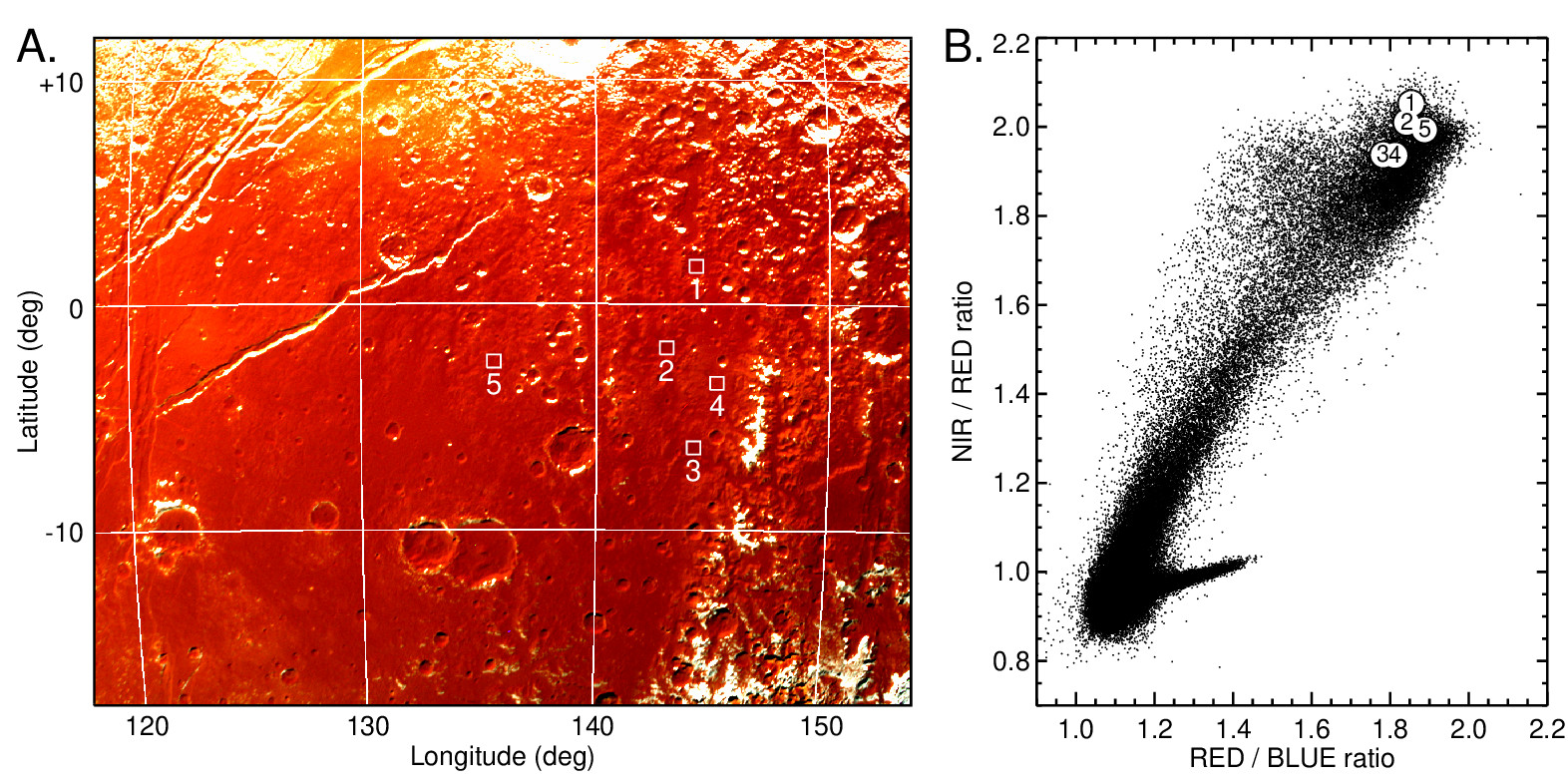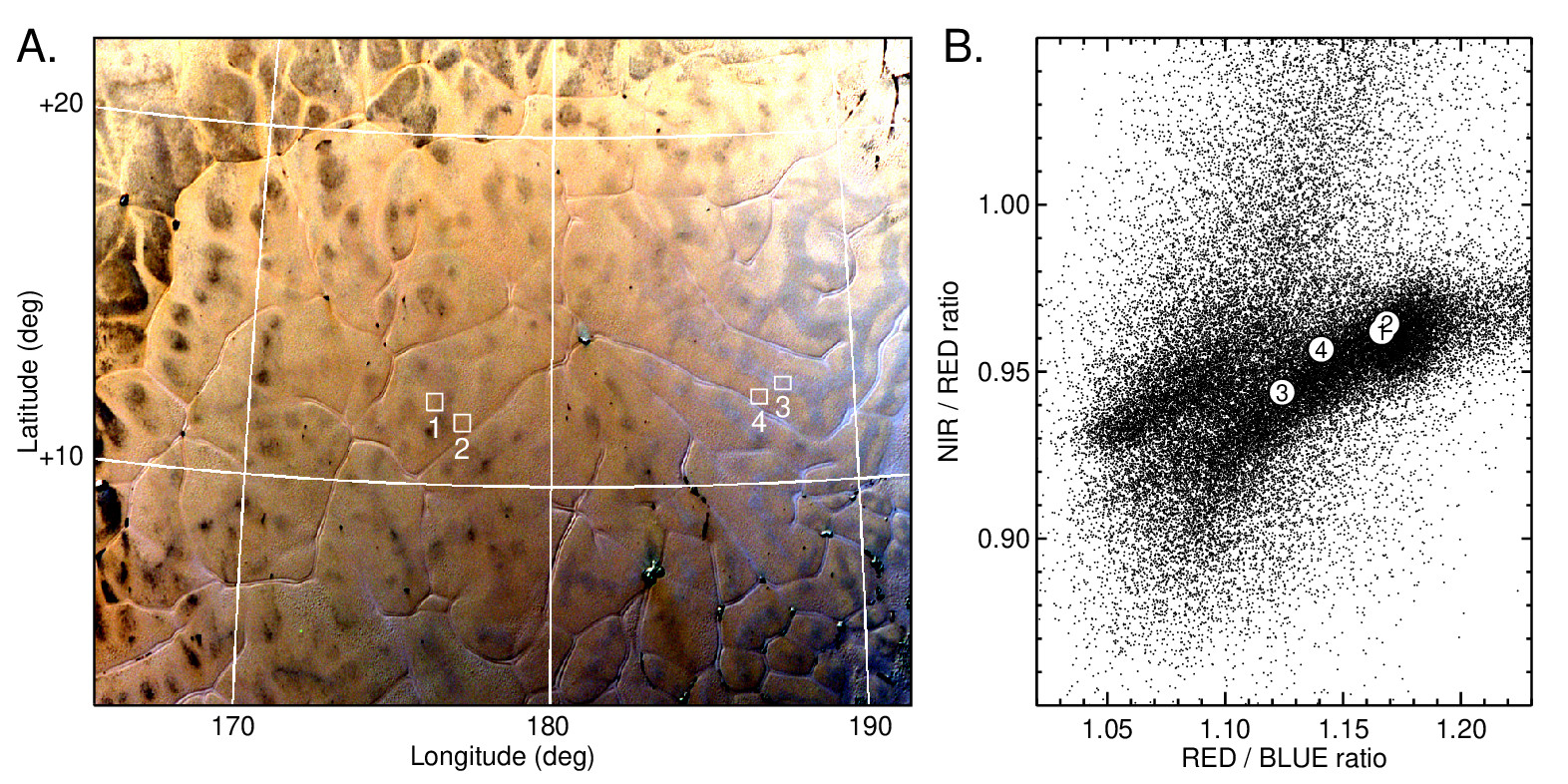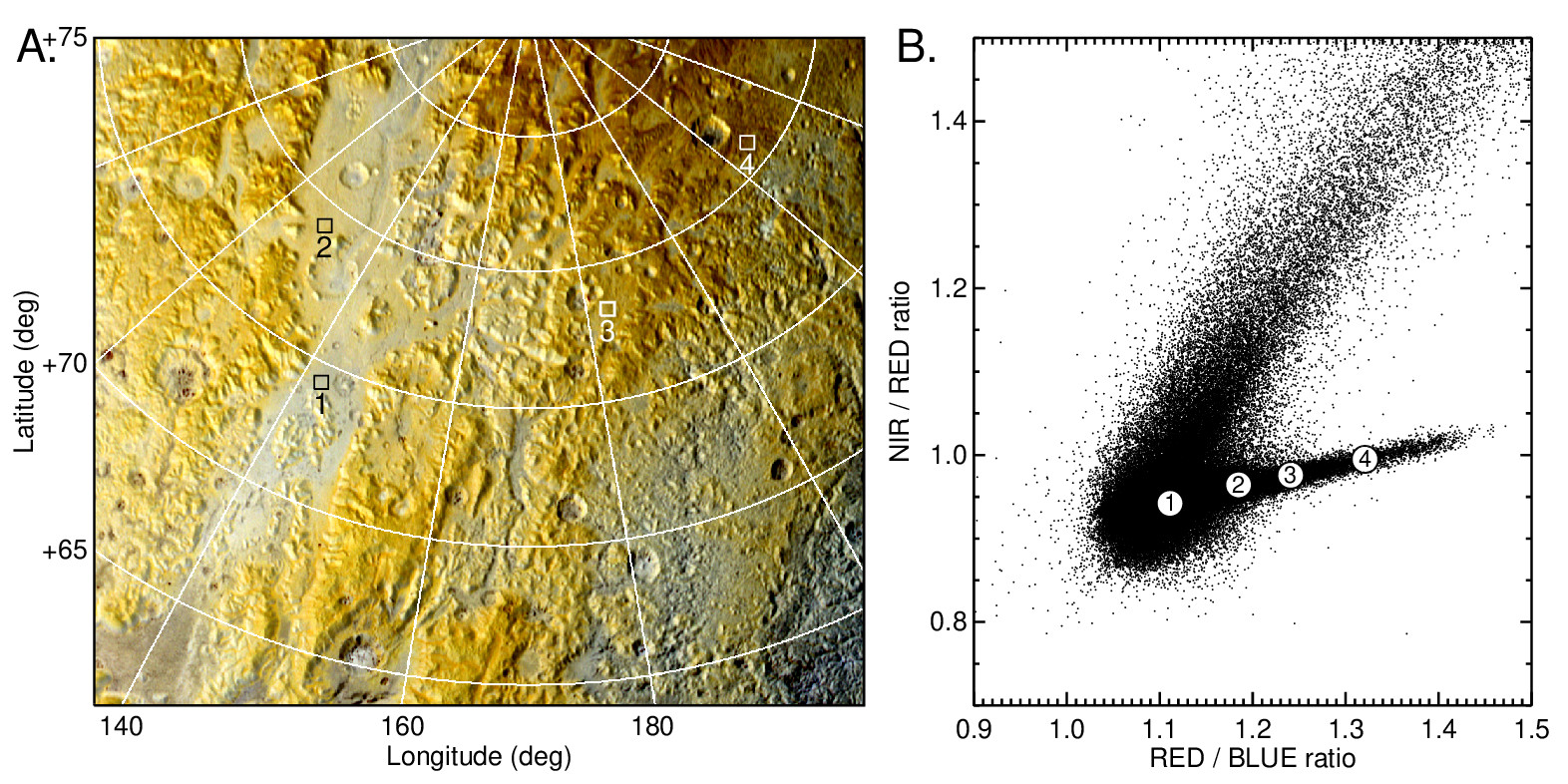
Pluto's Haze as a Surface Material
Published in 2018 in Icarus 314, 232-245.
W.M. Grundy1, T. Bertrand2, R.P. Binzel3, M.W. Buie4, B.J. Buratti5, A.F. Cheng6, J.C. Cook7, D.P. Cruikshank2, S.L. Devins5, C.M. Dalle Ore2,8, A.M. Earle3, K. Ennico2, F. Forget9, P. Gao10, G.R. Gladstone11, C.J.A. Howett4, D.E. Jennings12, J.A. Kammer11, T.R. Lauer13, I.R. Linscott14, C.M. Lisse6, A.W. Lunsford12, W.B. McKinnon15, C.B. Olkin4, A.H. Parker4, S. Protopapa4, E. Quirico17, D.C. Reuter12, B. Schmitt16, K.N. Singer4, J.A. Spencer4, S.A. Stern4, D.F. Strobel17, M.E. Summers18, H.A. Weaver6, G.E. Weigle II11, M.L. Wong10, E.F. Young4, L.A. Young4, and X. Zhang19
(1) Lowell Observatory, Flagstaff AZ.
(2) NASA Ames Research Center, Moffett Field CA.
(3) Massachusetts Institute of Technology, Cambridge MA.
(4) Southwest Research Institute, Boulder CO.
(5) NASA Jet Propulsion Laboratory, La Cañada Flintridge CA.
(6) Johns Hopkins University Applied Physics Laboratory, Laurel MD.
(7) Pinhead Institute, Telluride CO.
(8) SETI Institute, Mountain View CA.
(9) Laboratoire de Météorologie Dynamique (CNRS/UPMC), Paris France.
(10) California Institute of Technology, Pasadena CA.
(11) Southwest Research Institute, San Antonio TX.
(12) NASA Goddard Space Flight Center, Greenbelt MD.
(13) National Optical Astronomy Observatory, Tucson AZ.
(14) Stanford University, Stanford CA.
(15) Washington University of St. Louis, St. Louis MO.
(16) Université Grenoble Alpes, CNRS, IPAG, Grenoble France.
(17) Johns Hopkins University, Baltimore MD.
(18) George Mason University, Fairfax VA.
(19) University of California, Santa Cruz CA.
Abstract
Pluto's atmospheric haze settles out rapidly compared with geological timescales. It needs to be accounted for as a surface material, distinct from Pluto's icy bedrock and from the volatile ices that migrate via sublimation and condensation on seasonal timescales. This paper explores how a steady supply of atmospheric haze might affect three distinct provinces on Pluto. We pose the question of why they each look so different from one another if the same haze material is settling out onto all of them. Cthulhu is a more ancient region with comparatively little present-day geological activity, where the haze appears to simply accumulate over time. Sputnik Planitia is a very active region where glacial convection, as well as sublimation and condensation rapidly refresh the surface, hiding recently deposited haze from view. Lowell Regio is a region of intermediate age featuring very distinct coloration from the rest of Pluto. Using a simple model haze particle as a colorant, we are not able to match the colors in both Lowell Regio and Cthulhu. To account for their distinct colors, we propose that after arrival at Pluto's surface, haze particles may be less inert than might be supposed from the low surface temperatures. They must either interact with local materials and environments to produce distinct products in different regions, or else the supply of haze must be non-uniform in time and/or location, such that different products are delivered to different places.

Fig. 1. The MVIC P_COLOR_2 Pluto observation with BLUE, RED, and NIR filter images displayed in blue, green, and red color channels, respectively. This "enhanced color" mapping of filters to display colors is used throughout the paper. The three main regions discussed in the text are indicated.

Fig. 6. A: hard stretch on the P_COLOR_2 observation of Cthulhu, with five regions of interest (ROIs) identified. ROIs 1-3 are topographic lows showing slightly darker shades. ROI 4 is a plains region that is slightly more pale. ROI 5 is near the center of a region of maximum redness identified by Olkin et al. (2017). B: color ratio plot, showing the mixing curve between Cthulhu colors at upper right and more typical Pluto colors at lower left, as well as the colors of the five ROIs, which are among the reddest colors seen on Pluto's encounter hemisphere

Fig. 9. A: Hard stretch of P_COLOR_2 showing convection cells in Sputnik Planitia, with ROIs selected to search for color contrasts between younger, up-welling zones in the centers of cells (ROIs 1 and 3) and older, down-welling zones near their peripheries (ROIs 2 and 4). B: Color ratio plot zoomed in on the dense clump of near-neutral bulk Pluto colors.

Fig. 10. A: Hard stretch on P_COLOR_2 showing the distinct coloration in Lowell Regio, especially in the highlands. ROIs are selected for a range of colors from bulk Pluto through increasing strength of the "gold" color. B: color ratios showing the different color trajectory for the "gold" material, compared with the mixing curve extending up toward Cthulhu colors, with a steeper ascent of the NIR/RED ratio relative to the RED/BLUE ratio.